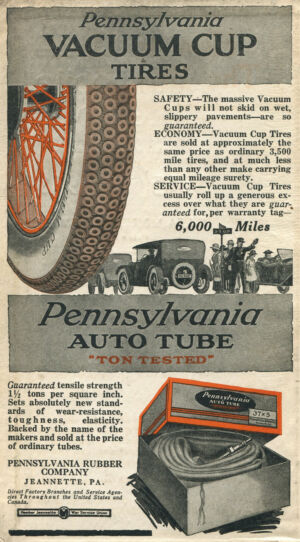It’s no accident: These automotive safety features flopped
Aurich Lawson | Getty Images
Turn signals have been a vehicle safety staple since they first appeared on Buicks in 1939. Of course, many drivers don’t use them, perhaps believing that other motorists can telepathically divine others’ intentions.
More people might use turn signals if they knew that drivers’ failure to do so leads to more than 2 million accidents annually, according to a study conducted by the Society of Automotive Engineers. That’s 2 percent of all crashes, according to the National Highway Traffic Safety Administration. And not using turn signals increases the likelihood of an accident by 40 percent, according to the University of Michigan Research Institute.
Human nature could be to blame—death and injury will never happen to us, only others.
You wish.
So, is it any wonder that during the first six decades of automobile production, there were few safety features? The world into which the automobile was born was one in which horses powered most transportation, but that didn’t mean getting around was safe. Say a horse got spooked. If the animal was pulling a carriage, its actions could cause the carriage to barrel away or even overturn, injuring or killing its occupants. Or the horse could cause death directly. In fact, a surprising number of kings met their end over the centuries by a horse’s swift kick. And rail travel proved even deadlier. Studies comparing modern traffic accidents with those of the early 20th century reveal that death from travel is 90 percent less likely today than it was in 1925.
Yet America’s passive acceptance of death from vehicle travel in the late 19th and early 20th century explains why auto safety was sporadically addressed, if at all. Sure, there were attempts at offering basic safety in early automobiles, like windshield wipers and improved lighting. And some safety features endured, such as Ford’s introduction of safety glass as standard equipment in 1927 or GM’s turn signals. But while other car safety features appeared from time to time, many of them just didn’t pan out.
Dead ends on the road to safer cars
Among the earliest attempts at providing safety was the O’Leary Fender, invented by John O’Leary of Cohoes, New York, in 1906. “It is made of bands of iron of such shape and design that falling into it is declared to be like the embrace of a summer girl on a moonlit night on the shore,” wrote The Buffalo News in 1919, with more than a little poetic license.

Jay Paull/Getty Images
According to the account, O’Leary was so confident of the fender’s ability to save lives that he used his own child to prove its safety. “The babe was gathered up on the folds of the fender as tenderly as it had ever been in the arms of its mother,” the newspaper reported, “and was not only uninjured but seemed to enjoy the experience.”
There’s no word on what Mrs. O’Leary thought of using the couple’s child as a crash test dummy. But the invention seemed worthy enough that an unnamed car manufacturer battled O’Leary in court over it and lost. Ultimately, his victory proved futile, as the feature was not adopted.
Others also tried to bring some measure of safety to automobiles, chief among them the Pennsylvania Rubber Company of Jeanette, Pennsylvania. The company’s idea: make a tire tread of small suction cups to improve traction. Called the Pennsylvania Vacuum Cup tire, the product proved to be popular for a while, with reports of sales outnumbering conventional tires 10 to 1, according to the Salt Lake Tribune in 1919. While Pennsylvania wasn’t the only rubber company to offer vacuum cup tires, the concept had its day before fading, although the idea does resurface from time to time.
Nevertheless, safety remained unaddressed, even as the number of deaths was rising substantially.
“Last year more than 22,000 persons were killed in or by automobiles, and something like three quarters of a million injured,” wrote The New Republic in 1926. “The number of dead is almost half as large as the list of fatalities during the nineteen months of America’s participation in the Great War.”
“The 1925 total is 10 percent larger than that for 1924,” the publication added.
The chief causes cited were the same as they are today—namely, speeding, violating the rules of the road, inattention, inexperience, and confusion. But at least one automaker—Stutz—was trying to put safety first.
Source link
